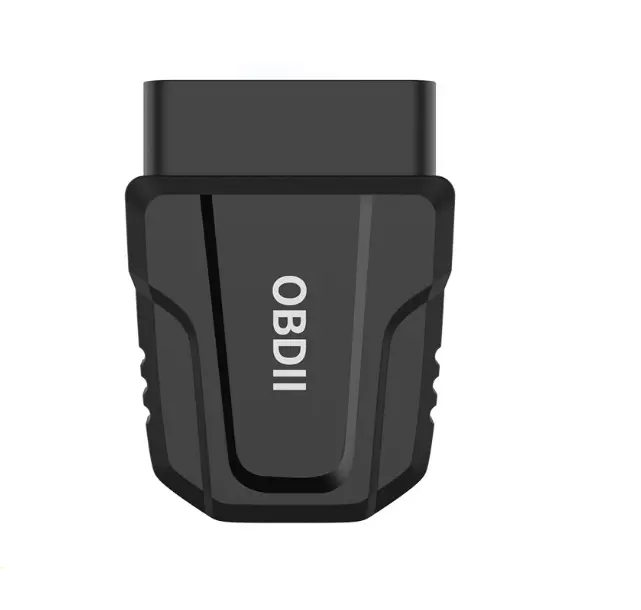Whether you’re a car owner trying to decode a check engine light or a DIY mechanic monitoring vehicle health, choosing the right OBD2 scanner is essential. In today’s market, two main options dominate: Bluetooth OBD2 scanners and wired OBD2 scanners. Each type has its advantages, depending on your usage, budget, and level of expertise. In this article, we’ll break down the pros and cons of each, helping you decide which one is the better fit for your car diagnostic needs.
This guide will help you understand the differences, compare features, and make an informed choice based on your needs.
What Is an OBD2 Scanner and How Does It Work?
An OBD2 (On-Board Diagnostics II) scanner is a device that connects to your vehicle’s diagnostic port, typically found under the dashboard. It reads fault codes from your car’s computer system—known as DTCs (Diagnostic Trouble Codes)—which can help you scan engine codes, check real-time data, and monitor systems such as emissions, fuel, and air intake.
All vehicles sold in North America since 1996 are OBD2-compliant, making this tool useful for nearly all modern cars.
Bluetooth OBD2 Scanners: Lightweight and Wireless
How They Work
Bluetooth OBD2 scanners plug into the OBD2 port and connect wirelessly to a smartphone or tablet via Bluetooth. They work alongside dedicated apps (such as Torque, OBDFusion, or Car Scanner) that display diagnostic information on your device screen.

Advantages
- Portability: Small and easy to carry in your glove box.
- Live Data Monitoring: View engine RPM, coolant temp, and fuel trim in real-time.
- App Flexibility: Use different apps to access various features.
- Affordable: Many models are available under $50, making them great for beginners.
Disadvantages
- Phone Dependent: Requires a compatible device and app.
- Connectivity Issues: Lower-quality models may disconnect during use.
- Security: Some cheap models may be vulnerable to data leaks or malware.
Wired OBD2 Scanners: Stable and Professional
How They Work
Wired OBD2 scanners connect directly to your car with a built-in cable and feature their own display and control buttons. No smartphone or internet connection is needed.
Advantages
- Stable Connection: No risk of Bluetooth dropouts.
- Standalone Use: Works independently of external devices.
- Advanced Diagnostics: Many models support manufacturer-specific codes and special tests.
Disadvantages
- Less Portable: Bulkier than Bluetooth models.
- Higher Cost: Often priced between $80–$200.
- User Interface: Screen and menu navigation may be less intuitive than smartphone apps.
| Feature | Bluetooth OBD2 Scanner | Wired OBD2 Scanner |
|---|---|---|
| Portability | ★★★★★ | ★★☆☆☆ |
| Ease of Use | ★★★★☆ | ★★★☆☆ |
| App Compatibility | Yes | No |
| Connection Stability | ★★★☆☆ | ★★★★★ |
| Price Range | $ – $$ | $$ – $$$ |
| Best For | DIY drivers, beginners | Mechanics, advanced users |
Which OBD2 Scanner Is Best for You?
Choosing the right scanner depends on how you intend to use it.
- If you’re a DIY car owner, want to occasionally check engine codes, and prefer using your phone—go with a Bluetooth OBD2 scanner. It’s the best OBD2 scanner for beginners, thanks to its ease of use and affordability.
- If you’re a professional mechanic or need in-depth diagnostics with no risk of disconnection, a wired OBD2 scanner is the better investment.
Both options will give you access to valuable vehicle insights and help you save money on unnecessary shop visits.
Recommended Products for 2025
- Bluetooth5.4 OBD2 Scanner – Ideal for casual drivers. Lightweight, more reliable connection, easy to set up, and works with multiple diagnostic apps.
- Wired & Wireless Dual Mode Scanner – A pro-level tool with wireless extended diagnostic functions for all the systems (ABS, SRS, transmission and more).
Conclusion
Both Bluetooth and wired OBD2 scanners are powerful tools that bring transparency and control to your car maintenance routine. If convenience, affordability, and app-based monitoring appeal to you, choose a Bluetooth OBD2 scanner. If you prefer robust performance and don’t mind spending a bit more for reliability, a wired OBD2 scanner is your best bet.
Ready to buy? Browse our curated collection of car diagnostic tools to find the perfect match for your vehicle and budget.
